On May 31st of this year, we officially closed out THREE kaizens pertaining to the community based event, Parade of Nation’s (PON). These three kaizens consisted of improving the fundraising, Multicultural Festival, and Parade aspect of PON.
What is the Parade of Nation’s? PON is a community event that is hosted by a committee, mainly consisting of members from the Michigan Tech faculty and staff. The event is going on its 28th year and its mission is to promote worldwide culture and national awareness in Michigan’s Upper Peninsula through an annual event that includes a parade and a multicultural festival, serving approximately 3,000 people.
When our team initially met in October, we identified four kaizens, but once we got started the Team Leader was able to solve one of the problems, allowing our teams to divide their focus on three instead. Before I get too much further I’d like to introduce the teams, the problem statements, and the targets that were identified for each kaizen.
For the fundraising kaizen the team was:
- Angela Kolehmainen – Facilitator
- Linnea McGowan-Hobmeier – Facilitator
- Vienna Chapin – Team Leader
- Rylie Store – Process Improvement Coordinator (PIC)
- Stephen Butina – PIC
- Bob Wenc – Member
- Cassy Tefft de Munoz – Member
- Laura Givens – Member
- Briana Tucker – Member
Problem Statement: The method for requesting sponsorship’s from local businesses isn’t the most efficient method and it creates a lot of work for those responsible for it.
Target: Focus on applying for grants and large/corporate sponsors and/or grants. Create less work while bringing in more money and still maintaining relationships with the local businesses.
For the Multicultural Festival kaizen the team was:
- Angela Kolehmainen – Facilitator
- Vienna Chapin – Team Leader
- Stephen Butina – PIC
- Rylie Store – PIC
- Bob Wenc – Member
- Cassy Tefft de Munoz – Member
- Scott Austin – Member
- Joseph Schutte – Member
- Briana Tucker – Member
Problem Statement: 3,000 people are crammed into a very busy venue that isn’t configured to hold so many people at one time. There is lots of chaos and safety concerns in regards to the amount of people present. On another note, the setting up and tear down of the tables, chairs, and booths take up so much time and people in the form of the volunteers.
Target: To provide customers with a new experience that is safe, entertaining, relaxing, and can still accommodate a large amount of people. Want to reduce the amount of time spent setting up and tearing down while also using volunteers appropriately in other areas of PON.
And finally the Parade kaizen team was:
- Linnea McGowan-Hobmeier – Facilitator
- Vienna Chapin – Team Leader
- Rylie Store – PIC
- Brianna Tucker – Member
- Laura Givens – Member
Problem Statement: Due to many locations the registration forms for floats, flags, and walkers get lost which creates a great deal of turn around time and inaccurate information which increases the stress on everyone. There is a lack of communication between the PON committee and the community in terms of how the parade is organized. There is a lot of stress associated with the day due to the lack of flow and organization of the event.
To begin the process on all of these kaizens we used Swimlanes to help us understand the process and to see the flow/lack there of. Once these swimlanes were done we went through the process and identified the areas of waste and assigned them a kaizen burst. Once this was done, the nature of the bursts helped us to determine what our next step was, whether it was another tool or if we could start brainstorming some potential solutions. We almost always opted for another tool.
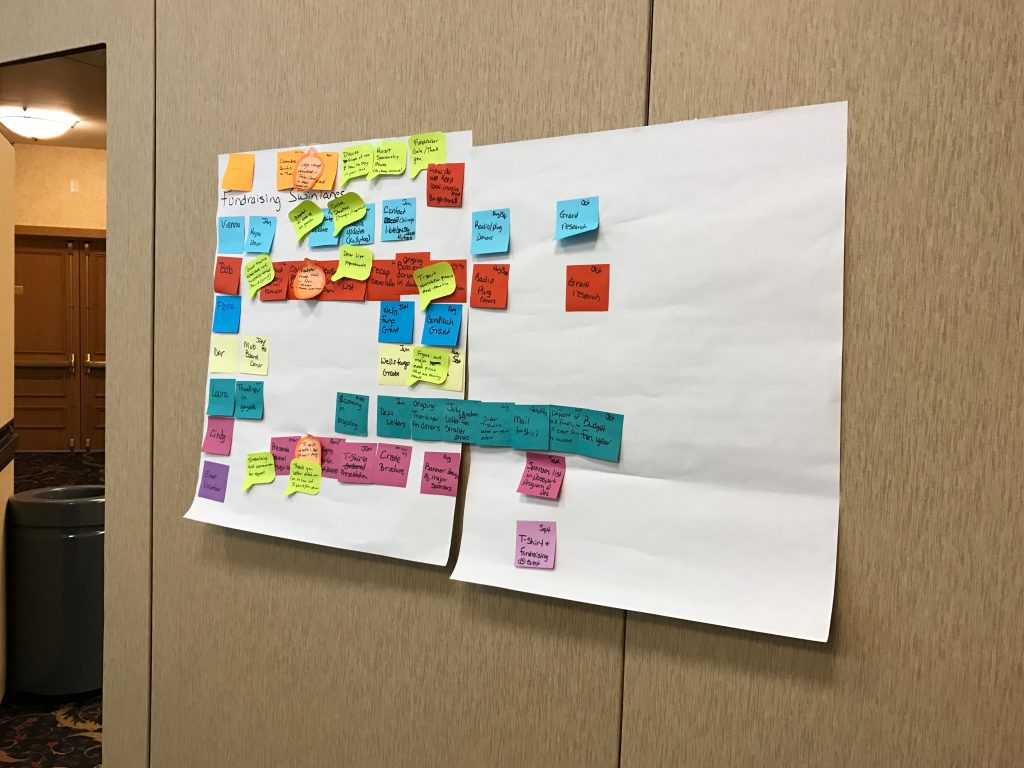
After completing the swimlane for fundraising the team decided that the next best thing to do would be to create an affinity diagram; one consisting of all of the types of sponsors. After that the team used a decision matrix to decide what type of sponsors they wanted to focus their time/energy on the most. The end result was that they created deadlines to apply for grants from larger sponsors, to send emails out to the local businesses, and as a thank you they provided each sponsor with a window decal to put on the window of their business (free advertising bonus as well!).
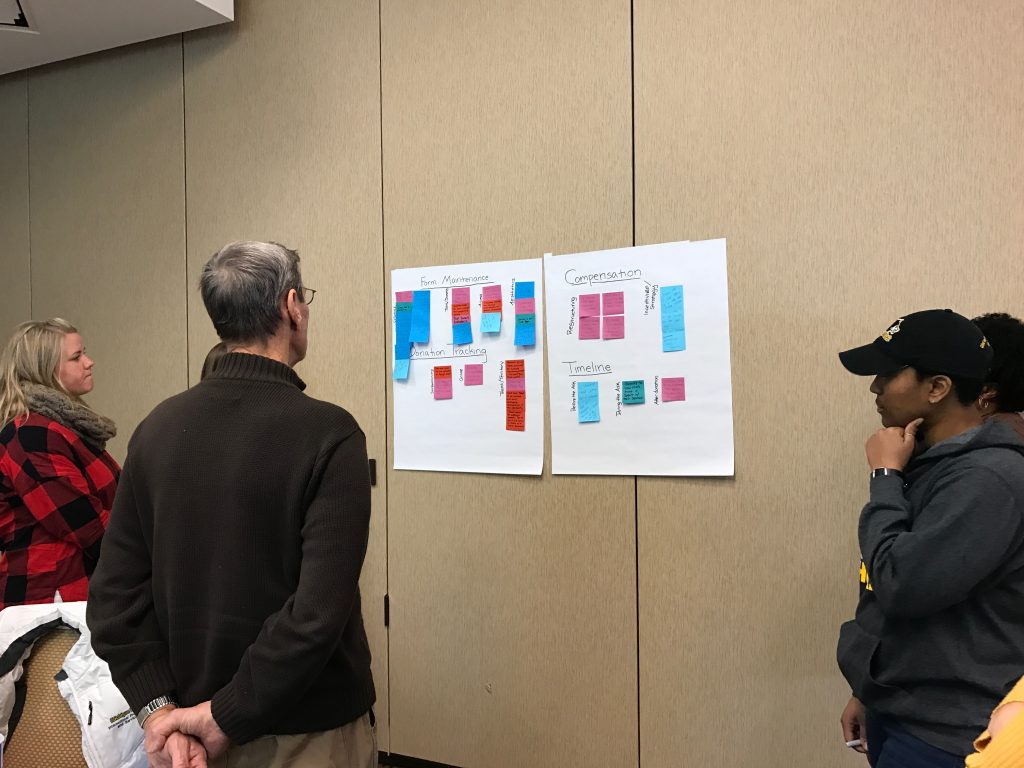
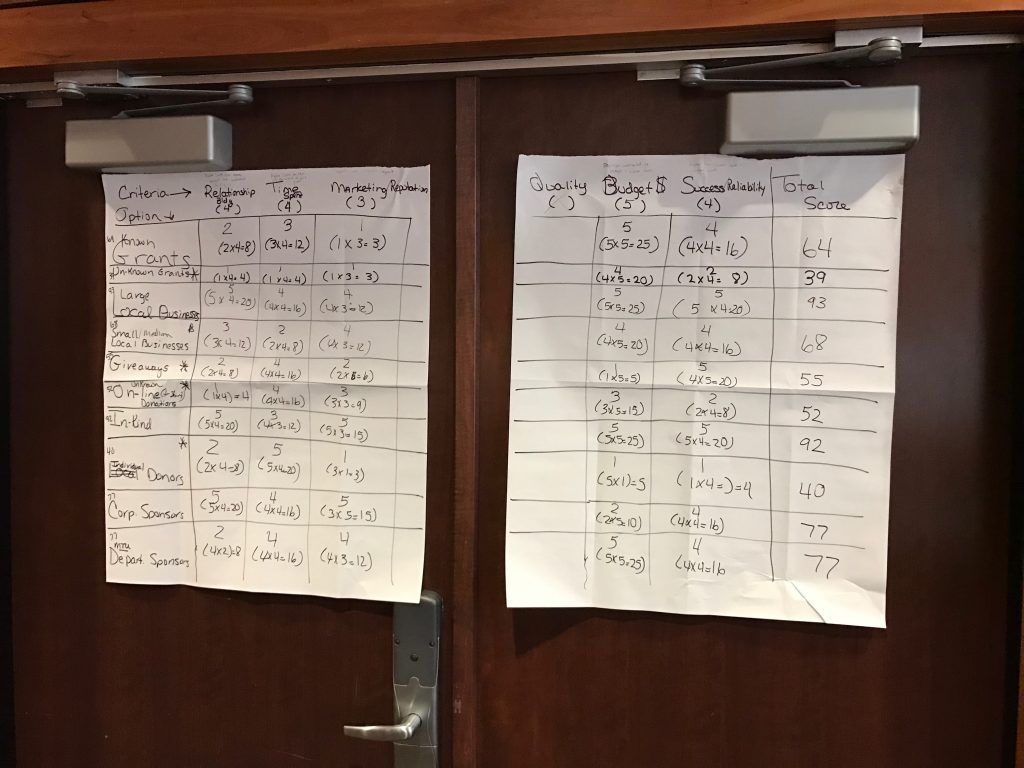
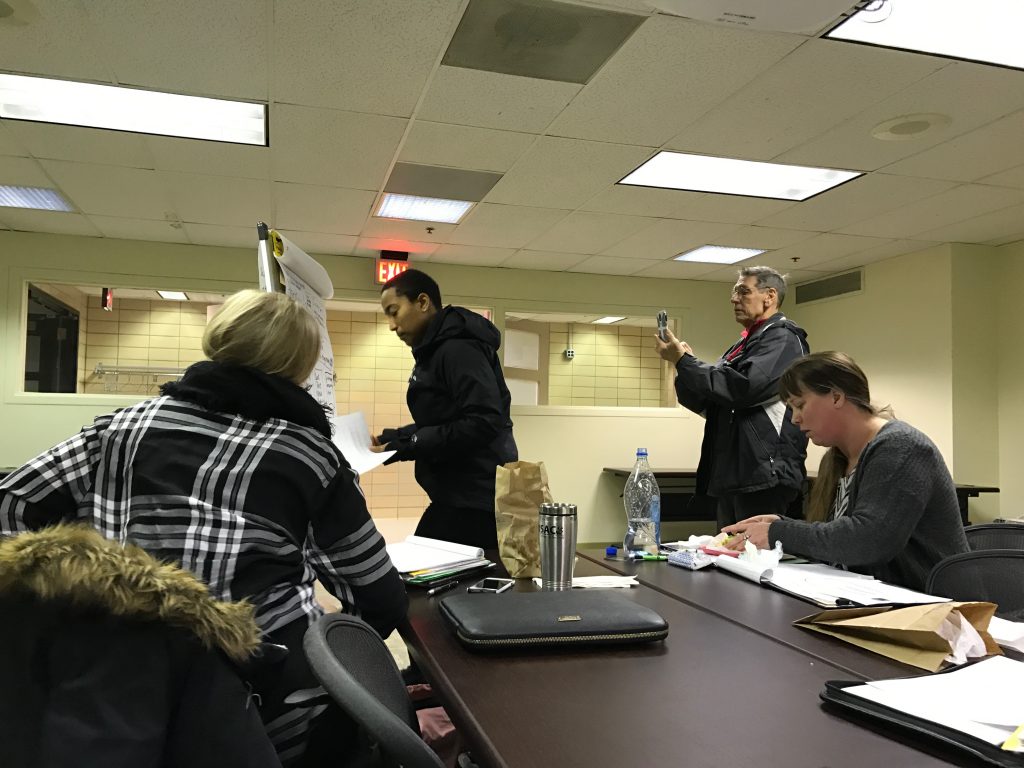
The multicultural festival team created a swimlane and after that they moved into a SIPOC and Spaghetti Diagram. These three tools paired closely together to help the team understand who’s responsible for what at the venue and then what is the current flow of the venue. The result of this was that the committee decided to use a different vendor for all of their tables, chairs, and booths. As a result they were provided with an outdoor tent which will utilize the outside space more, the inside space was freed up, and for about the same price they were provided with some other great bonuses such as table cloths and decorations. The other perk to using a different vendor is that the vendor will do all of the setup and tear down, allowing PON volunteers to be used more effectively in other aspects of PON, such as the parade. The most important result? Now the venue is being used safely.
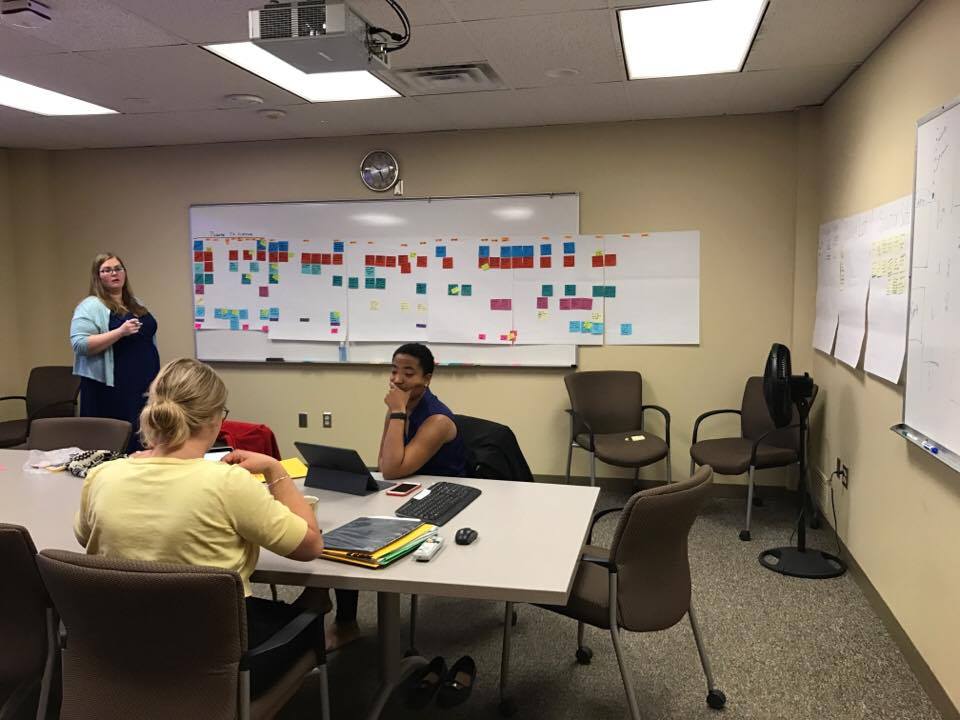
After starting the swimlane for the parade, we quickly realized the extent of the waste in this particular process. This swimlane turned into a much bigger process than we had ever imagined, nearly eight pages long of steps and details. However, after carfeul conversation, we were able to decide that most of the areas of waste were a result of poor visual management. By brainstorming visual management solutions for each are of waste, we were able to increase the communication between the PON committee members and the community. The action items that came out of this kaizen were plentiful but overall we believe that the flow of the parade will increase and the waste will decrease. To help with communication we found there wasn’t a shared understanding of who was responsible or accountable for what, so to help with this area the team completed a R.A.C. I. chart, which is being shared among the PON committe and volunteers, so that everyone has a shared understanding.
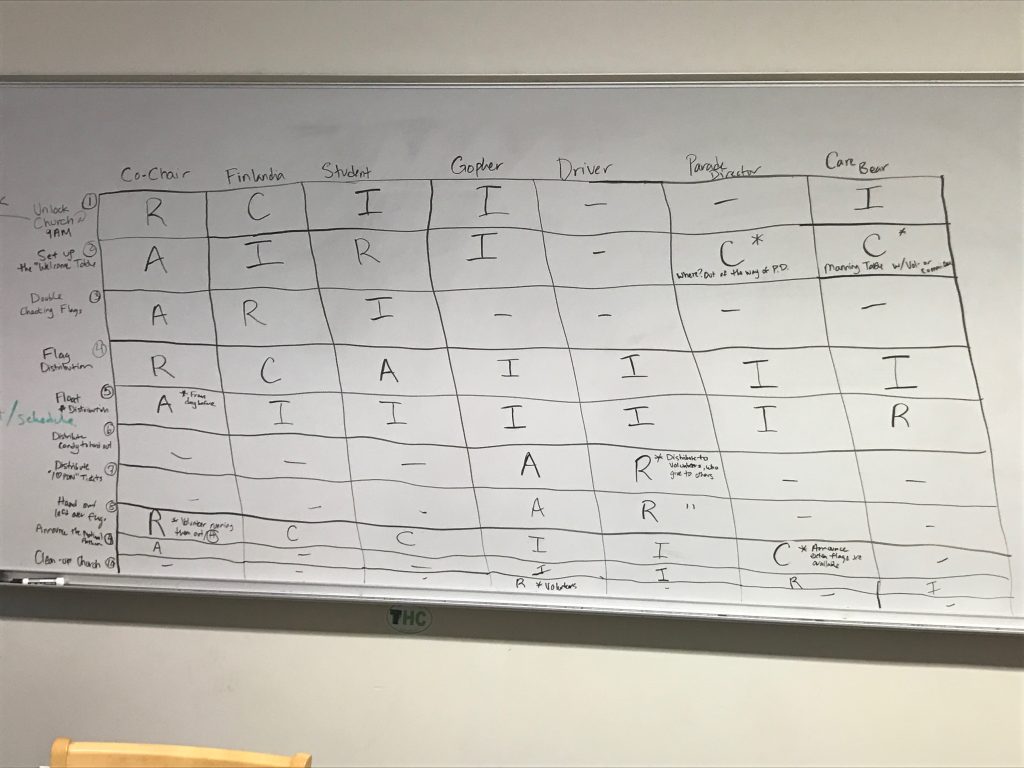
In the words of the team leader: she was happy with the kaizens and she enjoyed gaining insight into new perspectives. “Each time (I) left with something new, I always learned and found creative ways to think, work, and function efficiently. These kaizens reduced stress for EVERYONE.” After her involvement in these three kaizens she’s formed some advice for those going through an improvement event, and it is, “Don’t be afraid to try something new. You don’t know what else is out there unless you embrace change and ask questions.”
We look forward to attending this years PON as community members and to support the teams we formed these past eight months. Our extensive time really brought a new meaning to the word community in terms of Michigan Tech’s campus, the Houghton County and surrounding areas, as well as between each other.
